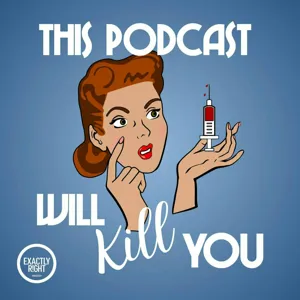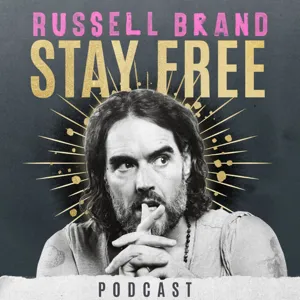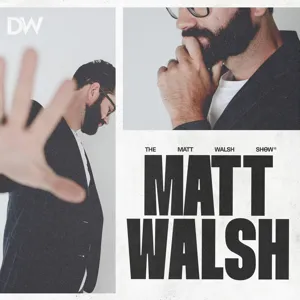Podcast Summary
Exploring the history and importance of identifying poison ivy and other toxic plants: Learn about the history of poison ivy, poison oak, and other toxic plants, and the importance of identifying them to avoid unpleasant experiences. Matt Candace, a host and PhD graduate, shares insights from his book 'In Defense of Plants'.
During this episode of "This Podcast Will Kill You" and "In Defense of Plants," the hosts discuss the history of poison ivy, poison oak, and other toxic plants. A notable announcement was made about Matt Candace, who recently earned his PhD and wrote a book called "In Defense of Plants" while hosting the podcast and working on his dissertation. The hosts also introduced a "quarantini" recipe, named "Creme de Itch," which they believe resembles the look of calamine lotion. The episode covers various aspects of poison ivy and other toxic plants, including their history and the importance of identifying them to avoid unpleasant experiences. The hosts also touch on the common misconception that poison ivy leaves have three leaves, but they plan to delve deeper into that topic later in the episode.
Misjudging Poison Ivy's Harmlessness: Misconceptions about poison ivy immunity can lead to unpleasant rashes. Identify and avoid poison ivy to prevent potential health issues.
Assuming you're immune to poison ivy or underestimating its effects can lead to a painful and itchy experience. The speaker, who once boasted about her immunity, learned this the hard way when she developed a severe rash after helping with gardening at her mom's house. Poison ivy, and the oil it produces called urushiol, have a long history of use in various cultures for lacquer, dyeing, and medicinal purposes. However, exposure can cause a rash that can be highly uncomfortable and even require medical attention. Therefore, it's crucial to identify and avoid these plants to prevent potential health issues.
Early Recognition of Poison Ivy in North America: European naturalists like John Smith and Paul Dudley described poison ivy's irritating effects, but didn't consider it dangerous or poisonous, and used calamine lotion for relief.
The discovery and understanding of poison ivy, a urushiol-containing plant, in North America began with early American natives, but it wasn't until European naturalists like John Smith and Paul Dudley wrote about it that it gained some recognition. These naturalists described the plant's irritating effects and potential remedies, but they didn't consider it dangerous or poisonous. Instead, they noted that it only caused temporary discomfort. Throughout the 1600s and 1700s, these plants were mostly ignored by botanists and naturalists, but some remedies like calamine lotion, which contains zinc oxide and ferric oxide, were used to treat the itchy rash caused by poison ivy. Calamine lotion has a long history, dating back to ancient Egypt, and it's still used today to relieve itchy skin.
Discovering Poison Ivy's Medicinal Properties: Andre de Fresnois, a 18th-century army physician, discovered poison ivy's potential healing properties after experiencing its effects on his skin. He prescribed it for various ailments, but its widespread use was limited due to toxicity concerns.
The historical use of poison ivy in medicine dates back to the late 1700s when army physician and professor of medicine, Andre de Fresnois, discovered its potential healing properties after observing its effects on his own skin. Despite the plant's ability to cause painful and itchy blisters, Fresnois was intrigued by its potential medicinal uses. He began cultivating and prescribing poison ivy tea, claiming it could cure various ailments, from skin maladies to paralysis. However, the lack of controlled trials and potential danger of the plant's toxicity made its widespread use questionable. Fresnois's love for poison ivy nearly cost him his life when his correspondence with a botanist friend was intercepted, leading to false accusations of treason. Nonetheless, Fresnois's curiosity and belief in the plant's medicinal properties paved the way for further exploration of its potential uses.
The Mystery of Poison Ivy's Irritating Effects: The exact chemical structure of poison ivy's toxin, urushiol, was identified in the 1920s, providing clarity on the cause of the irritating reaction.
The mystery of what causes the irritating reaction to poison ivy and related plants was a long-standing one, with various theories floating around before the exact chemical structure of the toxin, urushiol, was identified in the 1920s. The discovery of urushiol brought clarity to the issue, but these plants have not been at the forefront of academic research. The song "Poison Ivy" by the Coasters, recorded in 1959, is a well-known popular reference to the plant and its irritating effects. Despite regional differences in folk music, the song serves as a reminder of the discomfort and itching caused by poison ivy.
The Many Faces of Poison Ivy: Poison Ivy is a toxic plant, a comic book character, a song title, and a metaphor for a seductive and dangerous woman. It causes a painful rash when touched and has been linked to a murder case.
The term "Poison Ivy" has multiple meanings and associations. It refers to a toxic plant that causes a painful rash, a character from Batman comics and movies, and even a song with a different meaning than originally thought. The plant, Poison Ivy, releases an oil called urushiol that causes an allergic reaction when it comes in contact with human skin. The song "Poison Ivy" is actually about a sexually transmitted infection, not the plant. The term has also been used as a metaphor for a seductive and dangerous woman. In popular culture, Poison Ivy is known for her villainous roles, often involving murder and manipulation. A Baltimore County woman named Roxanne Amec was murdered in 2006, and her body was found in a wooded area filled with poison ivy. Her husband, Michael Amick, was eventually convicted of her murder due to circumstantial evidence, including his poison ivy-covered arms. The history of Poison Ivy is jumbled, but it continues to inspire intrigue and fascination.
Urushiol from Poison Ivy Causes Allergic Reactions: Exposure to urushiol, a compound in poison ivy, can cause allergic reactions even after the plant is touched or damaged. 50-75% of adults are sensitive, and sensitivity can be influenced by genetics and environment.
Urushiol, a phenolic lipid compound found in the resin of poison ivy and related plants, is the cause of allergic reactions. This compound is contained within the plant tissues and is only released when the plant is damaged. Urushiol is nonvolatile and dries quickly, allowing it to maintain its antigenic properties and cause reactions even after the plant has been touched or brushed against. Exposure to as little as 2 milligrams of urushiol can result in a reaction, and sensitivity to the compound can be genetic or environmental. The compound can also be aerosolized in smoke and affect the respiratory tract. Approximately 50-75% of the US adult population is sensitive to urushiol, and the risk of sensitivity may depend on both genetic and environmental factors. The speaker shared a personal story of how their mother's exposure during pregnancy may have influenced their own lack of sensitivity.
Poison Ivy and Type 4 Hypersensitivity Reactions: Poison ivy causes allergic contact dermatitis, a type 4 hypersensitivity reaction where the immune system overreacts to urushiol oil, leading to inflammation and a rash.
Poison ivy causes an allergic contact dermatitis, which is a type 4 hypersensitivity reaction. This means that the immune system overreacts to the urushiol oil in poison ivy, leading to inflammation and a rash. The discussion also highlighted that there are different types of hypersensitivity reactions, each with distinct antibody responses and resulting health effects. The speaker was particularly excited about discussing type 4 reactions, as they cause allergic contact dermatitis. Understanding these reactions can provide valuable insights into the immune system and various health conditions.
Poison Ivy Binds to Skin Cells to Trigger Allergic Response: Poison ivy causes a delayed allergic reaction by binding to Langerhans cells in the skin, leading to redness, itching, and blisters. Inhalation can cause severe respiratory symptoms and long-term damage.
Poison ivy causes an allergic reaction by binding to antigen presenting cells, specifically Langerhans cells in the skin. These cells then travel to the lymph nodes and alert T cells, which create a memory response and remain in the body ready to attack the urushiol antigen on subsequent exposure. This delayed type response results in symptoms such as redness, itching, and blisters appearing around 2 days after contact, but it can take up to 2 weeks. Inhalation of poison ivy smoke can lead to more severe symptoms, including respiratory issues and potential long-term damage.
Poison ivy exposure can cause severe skin reactions and potentially life-threatening respiratory distress: Promptly washing off poison ivy oil with soap and water can prevent severe skin reactions and potential respiratory distress from inhaled oil
Poison ivy exposure can lead to severe skin reactions, including large fluid-filled blisters (bullae) that can be uncomfortable and potentially life-threatening if inhaled. The inflammatory reaction from inhaled poison ivy can cause swelling or closing of the respiratory tract, leading to respiratory distress and even death. Additionally, poison ivy can cause a widespread dermatitis, leading to itchy bumps all over the body. Without treatment, the reaction can last for weeks. It's important to note that the oil from poison ivy can remain antigenic on surfaces and can be spread through contact with contaminated objects or pets. Washing off the oil with soap and water within 30 minutes of exposure can help prevent the reaction, but if it's not done promptly, the oil can be absorbed into the skin and cause a reaction even hours later.
Effective ways to prevent and treat poison ivy rashes: Use Dial Ultra soap, take oral steroids when needed, and avoid repeated exposure to prevent poison ivy rashes. Being informed and prepared can help minimize the impact of encounters.
While there are various methods for preventing and treating poison ivy rashes, the most effective ways include using specific soaps like Dial Ultra, taking oral steroids when necessary, and avoiding repeated exposure. However, it's important to note that sensitivity to poison ivy varies greatly among individuals, and the reason for this is not fully understood. Additionally, desensitization has not been proven to be effective for poison ivy. The Anacardiaceae family, to which poison ivy, poison oak, and poison sumac belong, also includes common foods like mangos, making it essential to be cautious when handling these plants. Overall, being informed and prepared can help minimize the impact of poison ivy encounters.
The Anacardiaceae Family: A Diverse Group of Plants with Both Edible and Allergic Members: The Anacardiaceae family includes a range of edible plants like cashews, mangoes, and pistachios, but also contains allergenic plants such as poison ivy, poison oak, and poison sumac, which produce urushiol causing allergic reactions in humans and primates.
The Anacardiaceae family, also known as the cashew family, is a large and diverse group of plants found all over the world. Many common foods, such as cashews, mangoes, and pistachios, belong to this family. However, some members of the family, including poison ivy, poison oak, and poison sumac, produce urushiol, a compound that causes allergic reactions in humans and some primates. Despite causing severe reactions in us, these plants are not primarily defensive against herbivores, as they are consumed by a wide range of animals without issue. The delayed reaction to urushiol makes it a difficult group of plants to study in detail, but ongoing research suggests that these compounds may serve other functions for the plant.
Plants with natural defense mechanism against fungi and bacteria: Urushiol, an oil found in certain plants like poison ivy, mangoes, cashews, and pistachios, protects them from fungi and bacteria by rupturing pests' ovipositors and preventing bacterial growth.
Certain plants, including poison ivy, mangoes, cashews, and pistachios, produce urushiol, an oil that acts as a natural defense against fungi and bacteria. This compound is most commonly found in young leaves, stems, and fruits, and in the case of mangoes, is highly concentrated in resin ducts. Urushiol's presence in plants varies within species and can affect different tissues. In poison ivy, it's effective at killing certain types of fungi and preventing bacterial growth. In mangoes, it helps protect the fruit from flies by rupturing their ovipositors and killing the resulting eggs and larvae. The concentration of urushiol in plants can also impact their susceptibility to pests. Overall, this natural defense mechanism plays a crucial role in the survival of these plants.
Poison Ivy's Role in Ecosystems: Poison ivy, while causing irritation in humans, plays a crucial role in ecosystems by providing food and thriving in increased CO2 levels. However, climate change and habitat destruction contribute to its expansion and potentiation, increasing its allergenic properties and making it more prevalent.
Poison ivy, a plant notorious for causing irritation in humans, plays a crucial role in ecosystems. It provides food for various insects and animals, including birds during migration, and thrives in increased CO2 levels. However, climate change and habitat destruction contribute to the expansion and potentiation of poison ivy, increasing its allergenic properties and making it more prevalent in the landscape. This double whammy effect has significant ecological implications but poses challenges for those who enjoy spending time in nature. The antimicrobial properties of poison ivy likely contributed to its evolution and the diversity of its compounds. Despite its negative effects on humans, it's essential to recognize its ecological importance and consider leaving it in the wild if possible.
Exploring the Fascinating World of Anacardiaceae Plants: Anacardiaceae plants, which include poison ivy and poison oak, produce urushiol causing hypersensitivity reactions in humans. Researchers are still studying why this occurs and what other compounds may exist in these plants.
The understudied group of plants known as Anacardiaceae, which includes poison ivy and poison oak, have fascinating properties that are still being discovered. These plants produce urushiol, a compound that can cause hypersensitivity reactions in humans. The reasons for this reaction are not fully understood and may be due to a coincidental evolutionary dynamic. The study of these plants is important as they can cause serious health issues, and there are many questions left to answer, such as why humans are affected by these compounds and if there are similar compounds in other plants. The history of the study of these plants is rich, with early naturalists having documented their properties and uses for centuries. Despite their potential dangers, there is still much to learn about these plants, and researchers are eager for curious and brave minds to explore this area of botany and ecology. If you're interested in learning more, check out Matt's episode on Independence of Plants for more information and sources for further reading.
Sharing experiences and knowledge in challenging times: Empathy and helping others can bring meaning and purpose, even in difficult situations. Check out In Defense of Plants podcast and follow Matt on social media for engaging content.
Even in the most challenging times, finding ways to help others and spread knowledge can bring meaning and purpose. Erin shared her experiences and lessons learned, emphasizing the importance of empathy and alleviating suffering. She encouraged listeners to check out her podcast, In Defense of Plants, and follow Matt on social media for engaging content. The guests expressed their gratitude for the opportunity to share their work and connect with their audience. They also acknowledged the support and enthusiasm of their fans, emphasizing the importance of community in overcoming challenges. Overall, the conversation highlighted the power of sharing experiences, learning from each other, and staying positive in the face of adversity.






